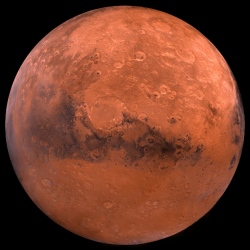
Both chambers of Congress just passed the NASA Authorization Act of 2017. With this transformative development, the space agency got a lot more than just $19.508 billion in funding. They also got a very clear mandate: Get humanity to Mars. To be clear, Mars has been in the works for some time;
However, the 2017 Act places a strong emphasis on this goal, making it the focal point of NASA’s long-term plans. In the document, congress asserts that the space agency is to get humans “near or on the surface of Mars in the 2030s.” Opposition to the bill from the administration isn’t expected, so it’s more than likely to be passed into law by the presidency.
In order to get to Mars by the 2030s, Congress is asking NASA to develop “an initial human exploration roadmap” that must be submitted before December 1, 2017.
The bill outlines the necessity of this roadmap, stating: “It is the sense of Congress that expanding human presence beyond low-Earth orbit and advancing toward human missions to Mars in the 2030s requires early strategic planning and timely decisions to be made in the near-term on the necessary courses of action for commitments to achieve short-term and long-term goals and objectives.”
To that end, the 2017 Act states that this plan should outline clear goals that are a bit closer to home, instead of just making a grand leap to the Red Planet all at once. The document states, “A human exploration roadmap should begin with low-Earth orbit, then address in greater detail progress beyond low-Earth orbit to cis-lunar space, and then address future missions aimed at human arrival and activities near and then on the surface of Mars.”
Speaking of the planned stages, NASA already has a basic outline: “The human exploration of Mars crosses three thresholds, each with increasing challenges as humans move farther from Earth: Earth Reliant [now until the mid-2020s], the Proving Ground [2018-2030], and Earth Independent [now to 2030s and beyond].”
